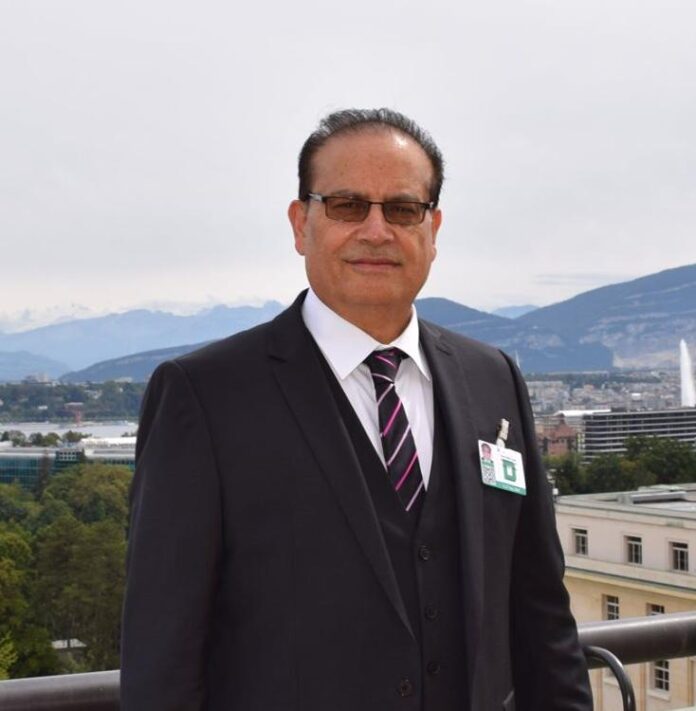By Qamar Bashir
The search for peace between Russia and Ukraine has entered a new and complicated phase, shaped not only by events on the battlefield but by the conflicting ambitions of global powers, domestic pressures on leaders, and the shifting calculus of international diplomacy. For nearly three years, the world has watched the war drag on with unrelenting devastation, and yet none of the principal actors—Russia, Ukraine, the United States, or Europe—have fully embraced a compromise that could end the conflict. Today, diplomacy is active but still gridlocked. Negotiators produce frameworks, counter-frameworks, and amendments, but the distance between what Moscow demands and what Kyiv can accept remains wide enough to keep real peace out of reach. A full 360° examination reveals that every stakeholder wants peace on their own terms, and those terms often collide instead of converging.
The latest chapter in this ongoing diplomatic effort began when the United States unveiled a detailed 28-point peace proposal designed to force movement where the front lines had stalled. The Trump administration hoped that a comprehensive framework could bring Kyiv and Moscow toward a ceasefire, territorial compromise, and eventual normalization of relations. But the plan ignited controversy immediately. Many in Europe and Ukraine interpreted it as leaning heavily toward Moscow’s demands—especially on territory, NATO membership, and the size of Ukraine’s armed forces. Trump publicly expressed frustration that he could not “end the war in 24 hours” as he had long promised on the campaign trail, discovering instead that the political, military, and emotional realities of the conflict were far more complex than campaign rhetoric allowed.
Ukraine’s response was swift and firm. President Volodymyr Zelensky called the idea of trading territory for peace “absolutely unacceptable,” repeating his longstanding position that Ukraine cannot cede land to legitimize Russia’s aggression. Kyiv also rejected any limits on the size or structure of its army, arguing that a nation under invasion must reserve the right to defend itself without external constraints. Recent speeches in European parliaments—particularly Zelensky’s appearance in Stockholm—reinforced Ukraine’s demand that Russia pay for the war through reparations and frozen assets. In Kyiv’s view, peace without justice would simply embolden future aggression, turning Ukraine into a precedent rather than a victor.
Yet Ukraine also faces military fatigue, economic strain, and internal pressure to find a path toward stability. That is why Zelensky agreed to meet U.S. diplomats in Geneva, where a “refined peace framework” was announced. The revised American position, though not publicly detailed, signaled a shift toward accommodating Ukraine’s red lines on sovereignty and security guarantees. It was a diplomatic maneuver designed to reassure Kyiv while keeping Moscow tentatively engaged. However, without public details, the framework remains more of a political gesture than a concrete roadmap, and Russia has not formally endorsed it.
On the Russian side, President Vladimir Putin has alternated between signaling openness to negotiations and insisting that Russia’s territorial gains remain non-negotiable. Moscow said the original U.S. proposal could serve as a “basis for further discussion,” primarily because it reflected several longstanding Russian demands: a guarantee that Ukraine would never join NATO, international acceptance of the annexed regions, and a demilitarized Ukraine incapable of threatening Russian territory. For the Kremlin, any settlement must also include the phased lifting of Western sanctions—preferably early in the process rather than at the end. Putin has emphasized that Russia will not halt operations unless the political settlement secures these goals, and he has warned that if Ukraine rejects the deal outright, Russian forces will “resolve it on the ground.”
The United States now finds itself occupying an awkward middle ground. It remains Ukraine’s principal military backer, but it is also attempting to shape a diplomatic settlement that could end a war with global economic and strategic consequences. The political pressure on Washington is tangible. Inside the U.S., critics argue that the administration’s proposal either forces Ukraine toward capitulation or, conversely, does too little to compel Moscow. Trump’s impatience—calling for a deal “before Thanksgiving”—clashes with the slow pace of diplomatic reality. U.S. envoys have tried to smooth the fissures by insisting that Washington will not impose peace on Ukraine, while simultaneously pushing for a framework that would satisfy Moscow enough to freeze the conflict.
Europe’s role has become increasingly assertive. After two years of relying heavily on U.S. leadership, European governments now insist that peace cannot be brokered through a bilateral U.S.–Russia channel. Officials in Berlin, Warsaw, Paris, and London have emphasized that European security architecture is directly affected by whatever settlement emerges. They warn that any agreement that rewards Russia could destabilize Europe for decades. Many European capitals are quietly drafting an alternative peace package emphasizing tougher security guarantees for Ukraine, long-term military support, and maintaining frozen Russian assets until reparations are addressed. European leaders publicly describe recent diplomatic movement as “promising,” but privately they express concern that Washington’s desire for a quick deal could undermine Ukraine’s sovereignty and Europe’s stability.
China, though not directly involved in the latest negotiations, continues to promote its earlier 12-point peace blueprint calling for a ceasefire, negotiation, and respect for sovereignty—while opposing unilateral sanctions. But Beijing avoids demanding Russian withdrawal and instead emphasizes “legitimate security concerns of all parties,” a phrase widely interpreted as support for Moscow’s objections to NATO expansion. China’s stance gives Russia diplomatic cover and economic stability but also enables Beijing to present itself as a global peacemaker without assuming real responsibility for the outcome.
India maintains a carefully balanced position, calling repeatedly for dialogue and diplomacy while avoiding any criticism of Moscow. New Delhi has become one of the largest buyers of discounted Russian oil, even as it increases exports of refined fuels—ironically, some of which end up in European markets. India portrays itself as a potential bridge between East and West, but it has not presented a concrete peace proposal. Instead, it limits its role to public messaging and quiet diplomacy.
With so many competing perspectives, what is the actual trajectory of peace? Diplomatically, activity has increased; substantively, the gap remains as wide as ever. The United States wants a deal but cannot impose one. Ukraine wants peace without sacrifice. Russia wants concessions Kyiv cannot accept. Europe wants a settlement that does not reward aggression. China wants stability without compromising its relationship with Moscow. India wants neutrality without irrelevance.
Most experts predict that a final peace deal remains distant. The war has not reached a point where either side believes the battlefield has exhausted its political value. Absent a dramatic military shift or a major political transition in Moscow, Kyiv, or Washington, the most plausible near-term outcome is not full peace but a limited arrangement—perhaps a sectoral ceasefire around the Black Sea or a monitored freeze along a defined front line. Even such limited steps, however, require trust, guarantees, and enforcement mechanisms that the parties have not yet agreed upon.
A comprehensive settlement that resolves territorial disputes, security guarantees, sanctions, and reparations may ultimately require a new geopolitical moment—one in which either Russia recognizes the cost of perpetual war or Ukraine recalibrates its conditions for peace under global pressure. Until then, the negotiations will continue, the frameworks will multiply, and diplomats will fly from Riyadh to Geneva to Ankara hoping that one day the war will finally bend toward resolution. But for now, the Russia–Ukraine peace plan remains an aspiration more than a destination, suspended between what the world hopes for and what the parties can actually accept.
By Qamar Bashir
Press Secretary to the President (Rtd)
Former Press Minister, Embassy of Pakistan to France
Former Press Attaché to Malaysia
Former MD, SRBC | Macomb, Michigan, USA

















